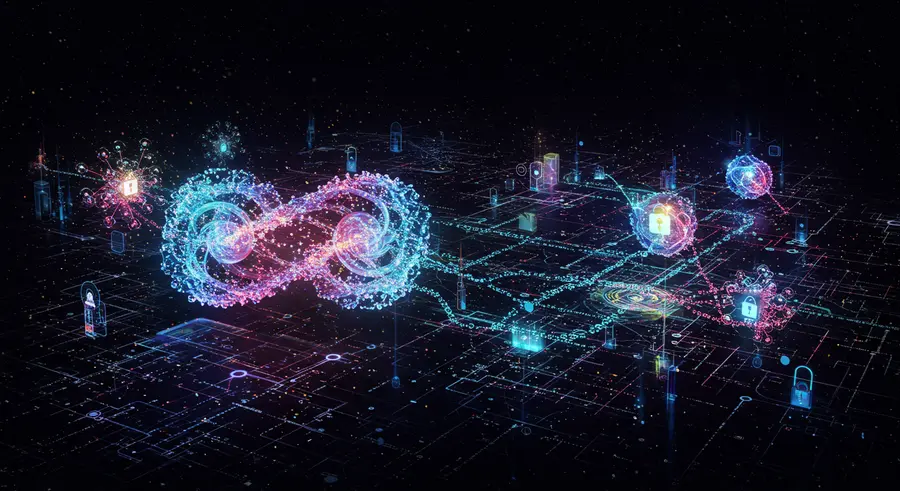The Imperative of Quantum-Safe Security

In an increasingly interconnected world, the security of our data and the integrity of our AI systems are paramount. Current cryptographic methods, while robust against classical attacks, face an existential threat from future fault-tolerant quantum computers capable of breaking widely used encryption algorithms like RSA and ECC. This impending "Q-Day" necessitates a paradigm shift in how we approach cybersecurity. Quantum cryptography, born from the principles of quantum mechanics, offers a promising solution by providing genuinely unbreakable encryption methods.
The convergence of artificial intelligence and advanced financial strategies, as seen in platforms designed for AI-powered market insights and financial analysis, underscores the critical need for robust security. Protecting sensitive financial data and proprietary algorithms against sophisticated cyber threats is not just a technical challenge but a business imperative, ensuring trust and stability in an evolving digital economy.
Quantum Key Distribution (QKD): Unbreakable Keys
At the heart of quantum cryptography lies Quantum Key Distribution (QKD). QKD protocols, such as BB84, leverage the fundamental laws of quantum physics—specifically the no-cloning theorem and the uncertainty principle—to establish a shared secret key between two parties with absolute security. Any attempt by an eavesdropper to intercept the key would inevitably disturb the quantum state of the photons, instantly alerting the legitimate users to the presence of an intruder. This "eavesdropping detection" feature is what makes QKD theoretically unbreakable, unlike classical encryption methods that rely on computational complexity.
QKD is already being implemented in secure networks for governments, banks, and critical infrastructure, offering an unparalleled level of security for sensitive communications. While QKD secures the key exchange, the data itself is still encrypted using classical symmetric-key algorithms, but with a quantum-secured key.
Post-Quantum Cryptography (PQC): Bridging the Gap
While QKD provides long-term security, its practical deployment can be challenging due to hardware requirements and distance limitations. This is where Post-Quantum Cryptography (PQC) comes into play. PQC refers to cryptographic algorithms that can run on classical computers but are designed to be resistant to attacks by both classical and quantum computers. These algorithms are based on "hard" mathematical problems that are believed to be intractable for quantum computers, such as lattice-based cryptography, multivariate polynomial cryptography, hash-based cryptography, and code-based cryptography.
NIST (National Institute of Standards and Technology) has been leading an extensive standardization process for PQC algorithms, which will be crucial for migrating our existing digital infrastructure to a quantum-safe state. PQC will serve as a vital bridge, securing our data and systems until universal fault-tolerant quantum computers become a reality and beyond.
AI Security in the Quantum Era
The implications of quantum computing extend beyond just data encryption to the security of AI systems themselves. Quantum AI algorithms may be vulnerable to new types of quantum attacks, and conversely, quantum methods could be used to enhance AI security. For instance, quantum machine learning could be employed to develop more robust anomaly detection systems, identify subtle patterns in adversarial attacks, or create quantum-resistant watermarks for AI models.
Conversely, the advent of powerful quantum computers could enable new forms of adversarial attacks against classical AI models, making it easier to craft adversarial examples or infer sensitive training data. Therefore, securing AI in the quantum era will involve a dual approach: developing quantum-resistant AI algorithms and leveraging quantum-enhanced security measures to protect existing and future AI infrastructures.
The Road Ahead: Challenges and Opportunities
The journey towards a quantum-safe digital future is not without its challenges. The migration from classical to quantum-resistant cryptographic standards will be a monumental task, requiring significant investment in research, development, and infrastructure upgrades. Interoperability, standardization, and the training of a skilled workforce are key hurdles to overcome.
However, the opportunities are immense. Quantum cryptography promises a new era of digital security, safeguarding privacy, ensuring data integrity, and building trust in our increasingly digital society. By proactively addressing the quantum threat, we can ensure that the transformative potential of quantum computing and artificial intelligence is realized securely and responsibly.
For more detailed technical insights into quantum cryptography and its standards, consult official NIST publications and research papers from institutions like the National Institute of Standards and Technology (NIST) or academic journals such as Nature Partner Journals - Quantum Information.